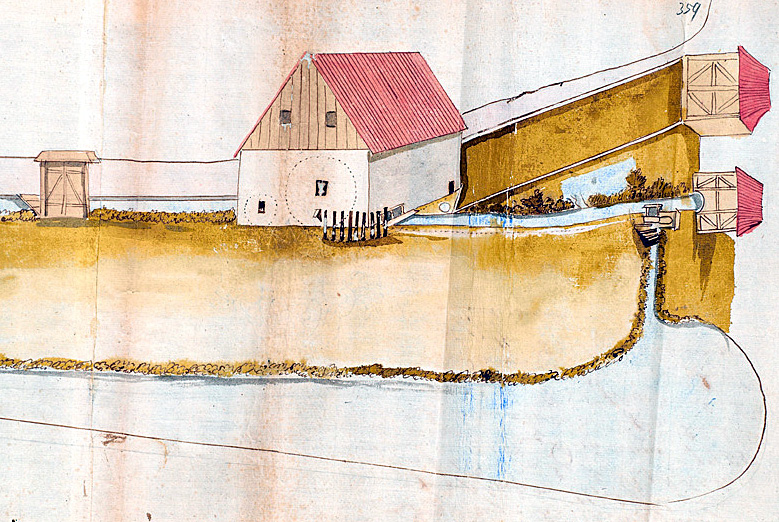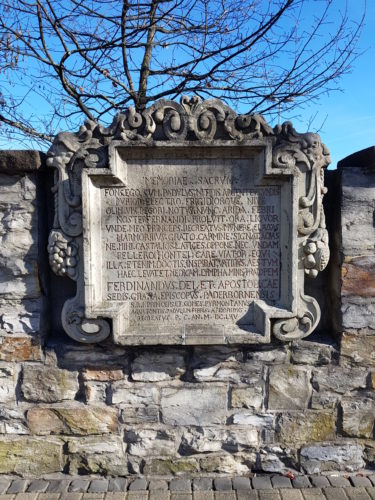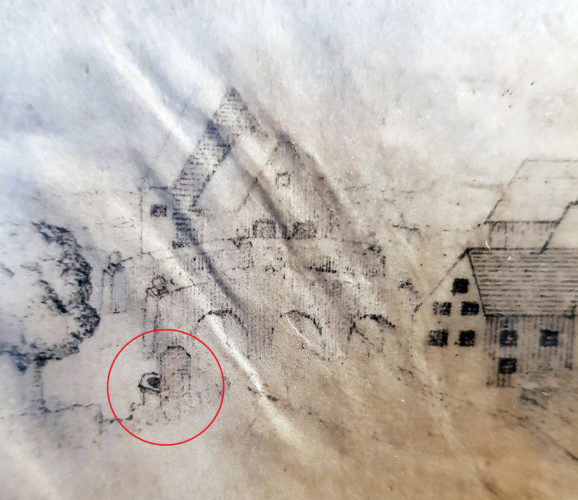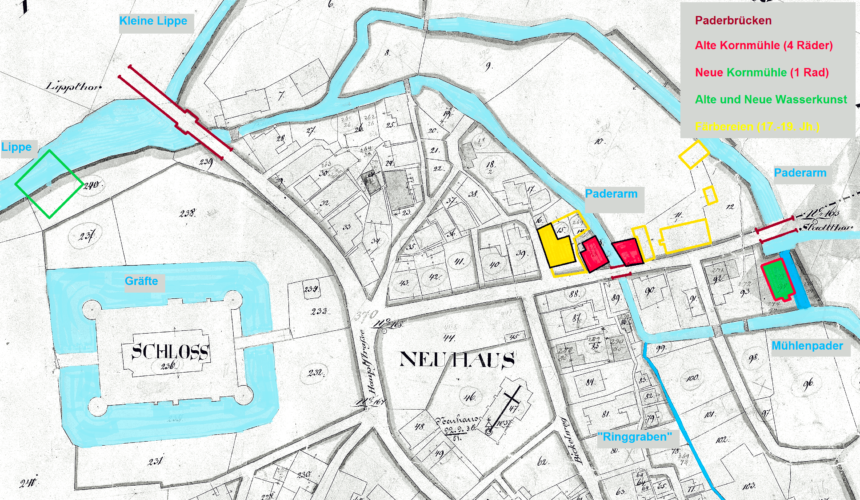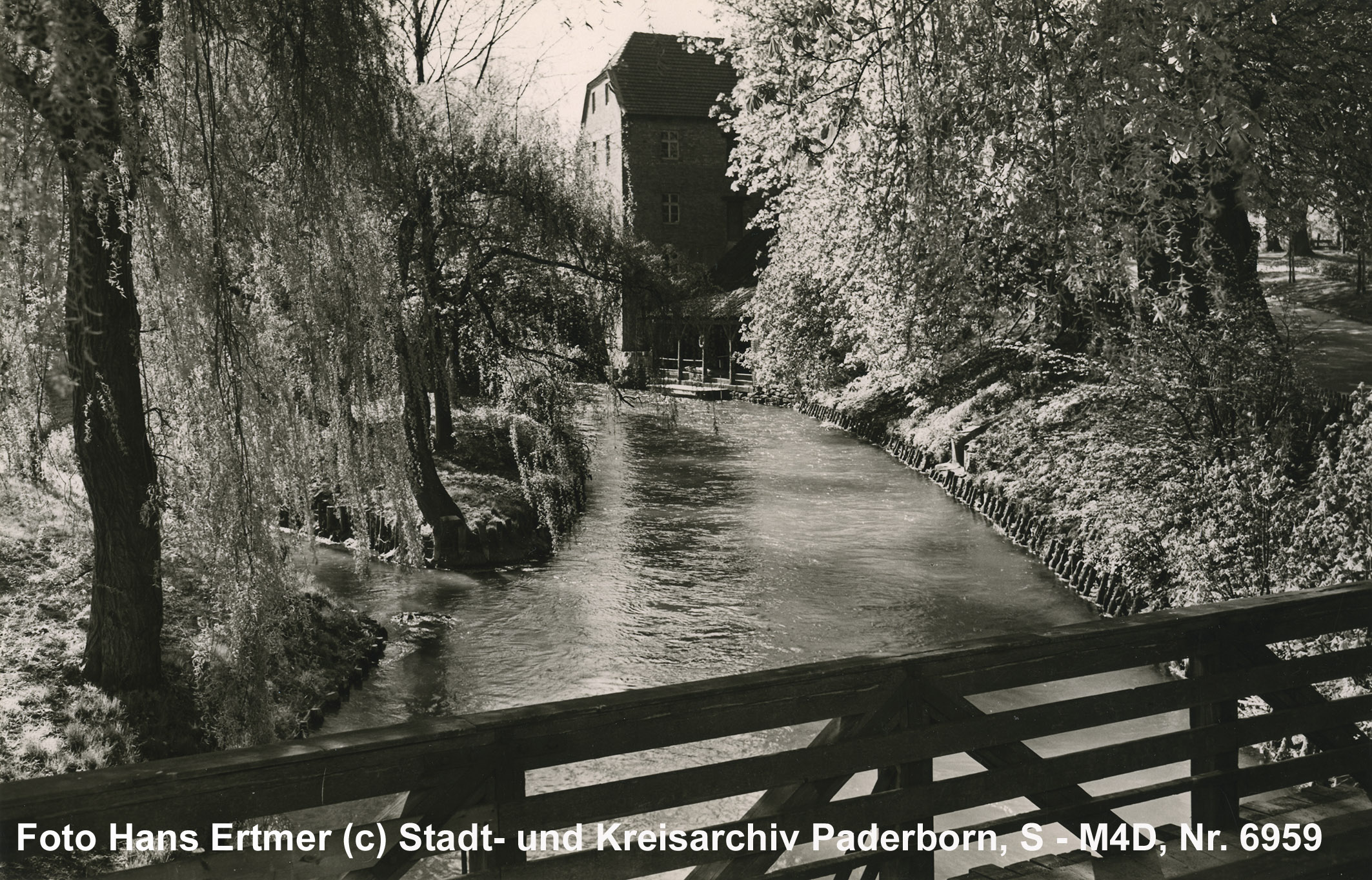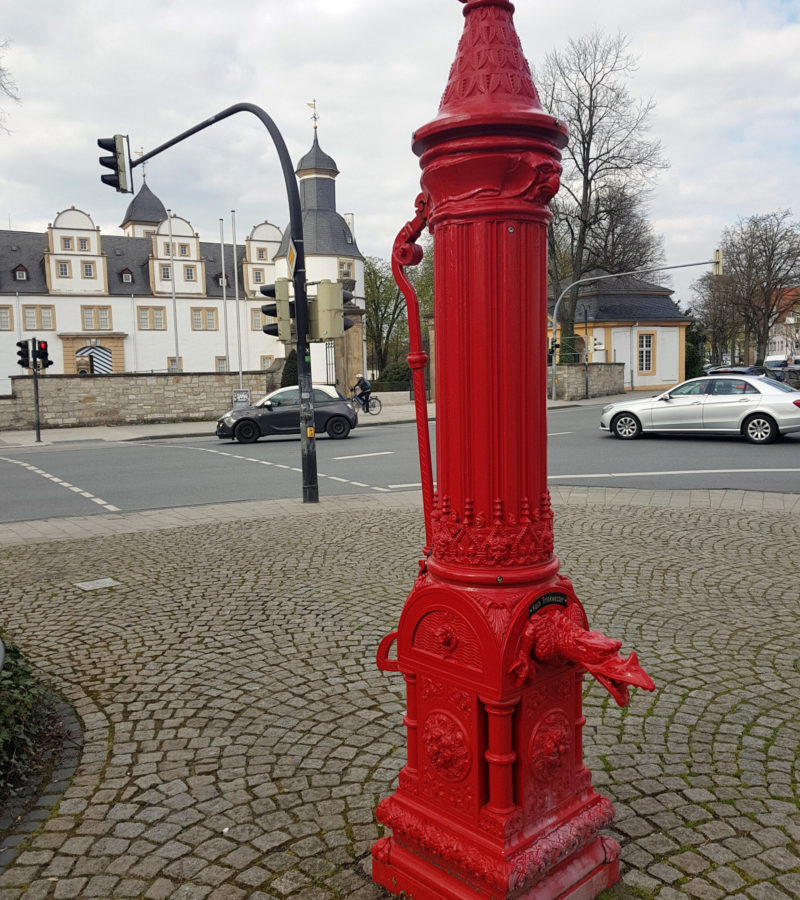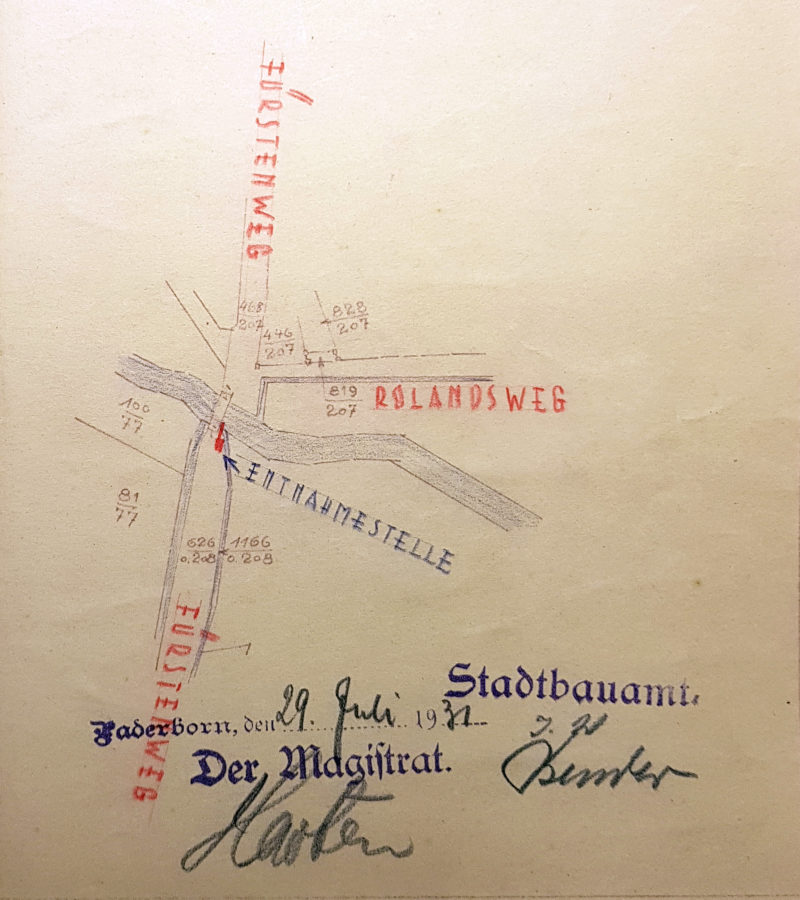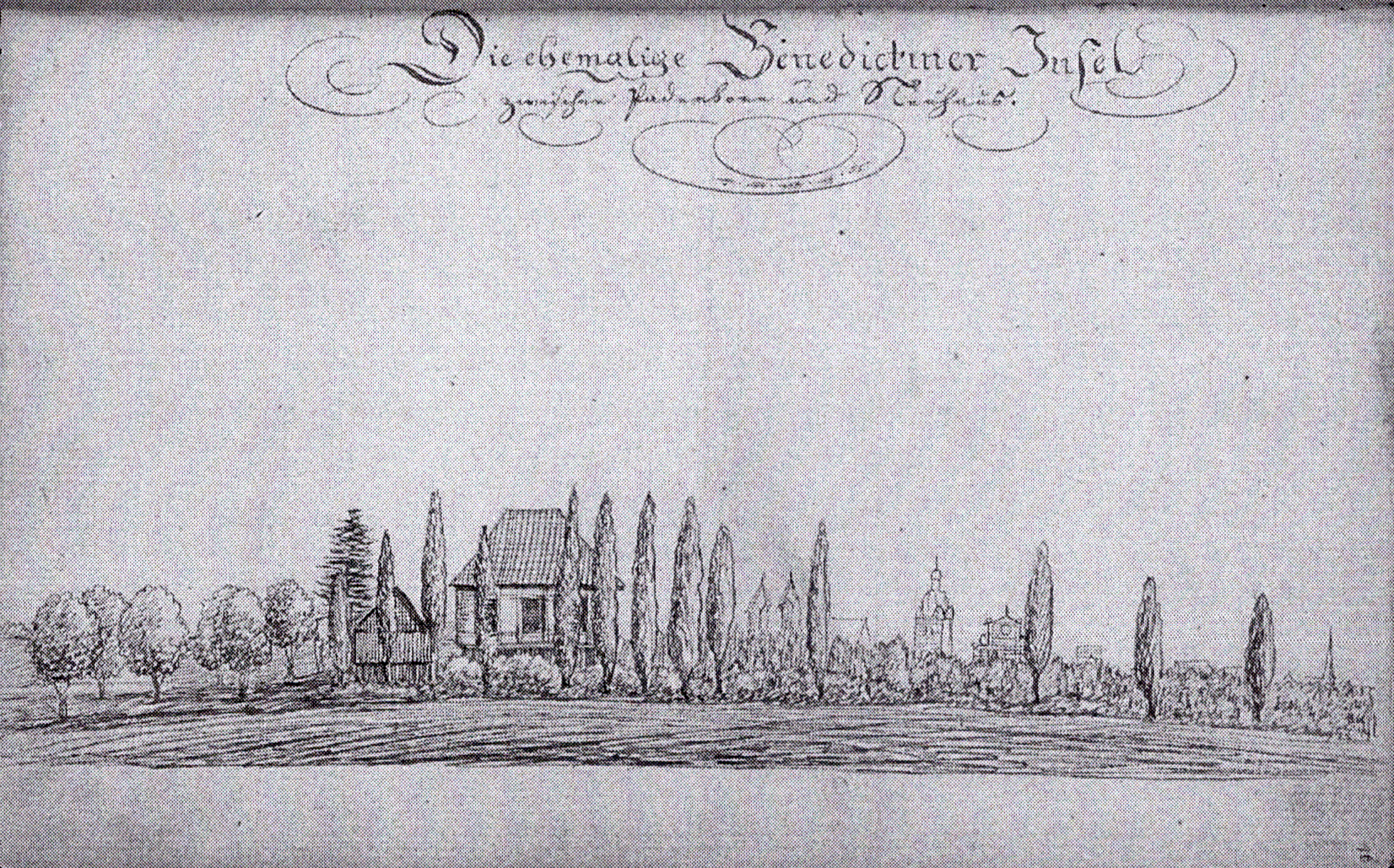[1] Cf. Ehrenpreis/ Horstkämper, Paderborn, p. 82.
[2] Quoted after Schröder, Franz: Geschichte der Wasserversorgung der Stadt Paderborn, Manuskript masch. Paderborn 1981, p. 13.
[3] Cf. Report of Jakob Heins to the principal Paderborn Jesuit college, o. D. [1624], EAB Pb, Studienfonds Paderborn, Akten I, Nr. 30, fol. 26r.
[4] Heinrich Schoppmeyer mentions two complaints from Paderborn bishops to the council for the years 1281 and 1412, in which the „overbuilding“ of the inner-city arms of the Pader with „stalls and pigsties“ was criticised. Schoppmeyer, Paderborn, p. 293.
[5] Cf. Schröder, Geschichte der Wasserversorgung, p. 59.
[6] Cf. quotation, 9 June 1808, StadtA Pb, A 888, fol. 29r-34v, here 29r. The contamination of the Pader with washing water probably comes from the „washhouse“ of the seminary (Jesuit college until 1773), which it maintained right next to its „Jesuitenwasserkunst“ (Jesuit waterworks) on the so-called „Pickelei“. Cf. Ströhmer, Michael: Strukturkonservativismus in Umbruchszeiten – Von der jesuitischen „Theodoriana“ zum (fürst)bischöflichen „Universitätshaus“ 1773-1819, in: Meyer zu Schlochtern, Josef (Ed.): Die Academia Theodoriana. Von der Jesuitenuniversität zur Theologischen Fakultät Paderborn 1614-2014, Paderborn 2014, p. 207-236, here p. 214; 218. Cf. also Hohmann, Klaus: Die Wasserkünste der Jesuiten und der Kapuziner an den Paderquellen, in: Die Warte 164 (2014), p. 23-28.
[7] Cf. Santel, Gregor G.: „Fons Padulus“ – Die Entdeckung des Ortes der Padulus-Quelle in Schloß Neuhaus, in: Die Residenz 85 (1994), p. 1-6.
[8] Cf. his assessment from Paderborn of 31 August 1825, LA Detmold, M 1 III E, Nr. 151, unfol.
[9] In 1892/93, the Ringgraben was lined with cement troughs to improve the water quality, but this did not help much. In 1935, the inlet of the polluted Ringgraben in front of the Burggräfte was finally filled in. Cf. Kandler, Ekkehard/ Krieger, Karla/ Moser, Marianne: Archäologische Bestandserhebung in Nordrhein-Westfalen: Paderborn – Schloß Neuhaus, Köln 2003, p. 37. Friendly hint by Dr. Sveva Gai, Stadtarchäologie Paderborn.
[10] Cf. Kataster Gemeinde Neuhaus, Mutterrolle v. 1832, LA Detmold, M 5 C, Nr. 1470. House garden and residence were located in Flur V, Parzellen 14 and 15.
[11] Cf. Instruction of the District Government of Minden to District Administrator von Elverfeldt, 19 August 1825, LA Detmold, M 1 III E, Nr. 151, unfol.
[12] The district government itself expresses doubts in its instruction to the Paderborn district administrator „whether our order is fully complied with“. LA Detmold, M 1 III E, Nr. 151, unfol.
[13] Quoted after Schröder, Geschichte der Wasserversorgung, p. 148.
[14] Cf. Report R. Dullo, quoted after Schröder, Geschichte der Wasserversorgung, p. 156. The sample in the section of the „Promenadenbrücke“ resulted in a total of 464 g hazardous substances/ cbm river water.
[15] Cf. Berhörster, Anton: Die Wasserversorgung im alten Neuhaus, in: Die Residenz 18/24 (1985), p. 29-37. Upscale households later afforded a brightly polished copper house pump that drew its groundwater from an older, often covered well shaft. Friendly hint by Mr. Michael Pavlicic.
[16] Berhörster lists the following locations: 1. well pump on „Eckardtstraße (at the former fire station)“, 2. corner of „Buse- and Immedingerstraße“, 3. „in front of the house Reißmeier“, 4. on „Bielefelder Straße“ at the house Böhle, 5. „Padulusstraße“ former „Ninive“, 6. „Auf dem Koksplatz“, today “Marienplatz” directly on the street. Berhörster, Wasserversorgung, p. 31.

